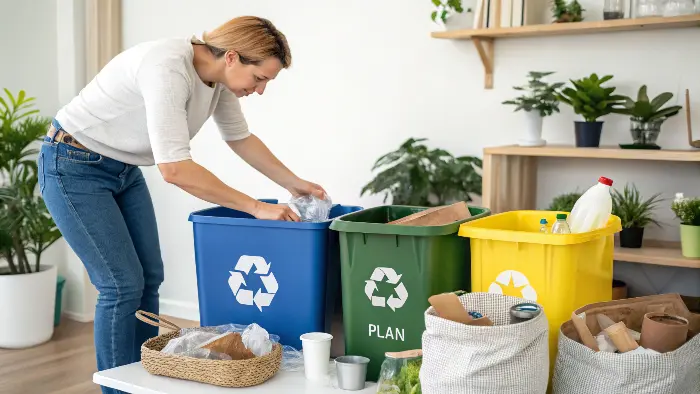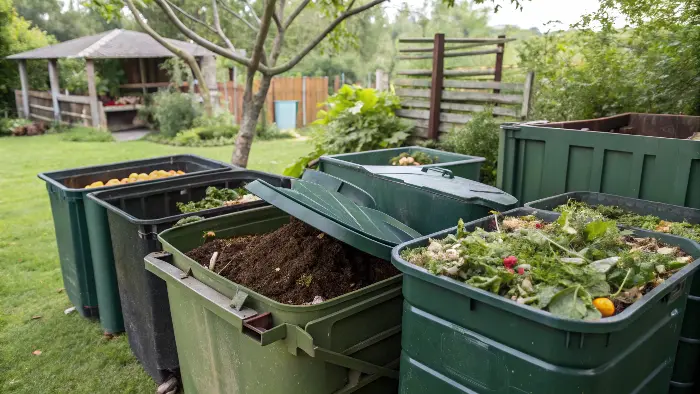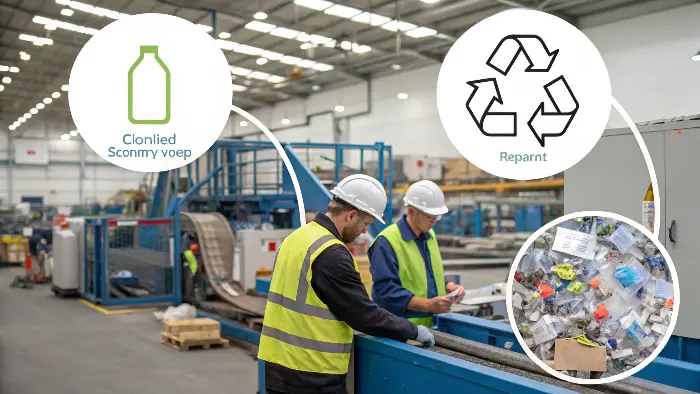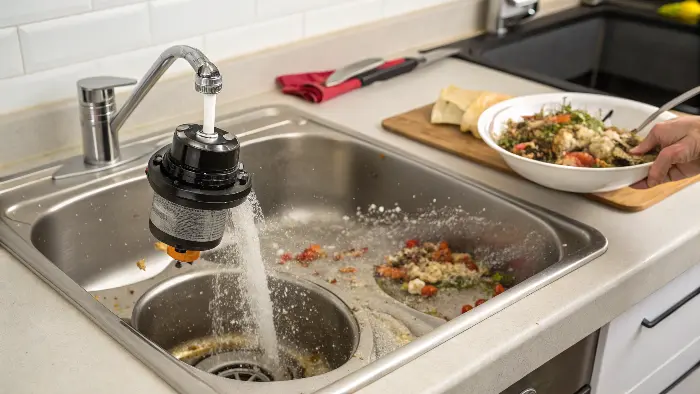Are you overwhelmed by the amount of waste your business produces? Traditional disposal methods are filling up landfills and harming the planet, which can damage your brand’s reputation. The good news is that effective, eco-friendly trash removal options exist, and implementing them is easier than you think.
Yes, several environmentally friendly trash removal options are available. The most effective strategies follow the "3 Rs": Reduce, Reuse, and Recycle. Beyond that, composting organic materials and ensuring the proper disposal of hazardous waste are crucial. These methods work together to minimize what we send to landfills, conserve natural resources, and reduce our overall environmental footprint. They form the foundation of a sustainable waste management plan for any home or business.

So, you know that greener options exist, but how do you choose the right one? It’s a question I get asked all the time in my work sourcing sustainable products. The truth is, not all methods are created equal. Some have a much bigger impact than others. Let’s break down the most effective strategies to help you understand which ones will make the biggest difference for your business and the planet.
What is the most environmentally friendly way to get rid of garbage?
You want to make the right choice for the environment, but with so many "green" solutions out there, it’s tough to know which one is best. Choosing a less effective method can waste your time and resources without delivering the positive impact you were hoping for.
The single most environmentally friendly way to get rid of garbage is to avoid creating it in the first place. This principle, known as "waste reduction" or "prevention," is the most important step in the waste management hierarchy. By consuming less, choosing products with minimal packaging, and avoiding single-use items, you solve the problem at its source. This is far more powerful than recycling or any other disposal method.

The most effective way to think about waste is through the "Waste Hierarchy," often expanded to the "5 Rs." This framework prioritizes actions from most to least environmentally beneficial. It’s a simple guide that I use constantly to evaluate our own practices and those of our partners. The goal is always to stay as high up on the hierarchy as possible.
The 5 R’s of Waste Management
| Priority | Action | Description | Business Example |
|---|---|---|---|
| 1 (Best) | Refuse | Don’t accept what you don’t need. | Refusing to accept plastic-wrapped pallets from a supplier. |
| 2 | Reduce | Use and buy less. | Switching to concentrated cleaning supplies that use smaller packaging. |
| 3 | Reuse | Use items again for their original purpose or a new one. | Using durable, washable containers for food service instead of disposable ones. |
| 4 | Recycle | Convert waste materials into new products. | Setting up a clear sorting system for cardboard, glass, and plastics. |
| 5 (Last) | Rot | Compost organic materials. | Sending food scraps and compostable tableware to an industrial compost facility. |
As you can see, recycling and composting are great, but they are near the bottom of the list. That’s because they still require energy and resources to process materials. True sustainability starts with reduction. In my role, I constantly challenge our suppliers to ship products with less packaging or to use reusable transport containers. It seems like a small change, but when you scale it across thousands of shipments, the impact is enormous. It not only reduces waste but also cuts down on shipping costs and handling time. The most eco-friendly garbage is the garbage that was never created.
What is an eco-friendly method of disposing of garbage?
Your business generates many different kinds of waste, from coffee grounds and food scraps to cardboard boxes and plastic wrap. Throwing it all into a single bin sends valuable materials to a landfill, where they take up space and release harmful greenhouse gases as they decompose. By separating your waste, you can use specific, eco-friendly methods like composting and recycling to turn that "garbage" into a resource.
Composting is an excellent eco-friendly method for disposing of organic garbage. This natural process uses microorganisms to break down food scraps, yard trimmings, and compostable products into a rich soil amendment. It diverts huge amounts of waste from landfills, which cuts down on methane, a powerful greenhouse gas. It also creates a valuable product that improves soil health and reduces the need for chemical fertilizers.

Once you’ve done your best to reduce and reuse, your next step is to properly manage the waste you do create. This means separating materials so they can be handled in the most ecological way possible. The two most powerful methods here are composting and recycling.
The Power of Composting
Composting is nature’s recycling program. It’s specifically for organic waste, which includes everything from vegetable peels to coffee grounds. When this material goes to a landfill, it gets buried without oxygen and produces methane gas. In a compost pile, it breaks down with oxygen, avoiding methane emissions and creating a nutrient-rich product. Many of the products we source at Ecosourcecn, like our bagasse containers and PLA cutlery, are designed for this process. It’s important to know that these materials require industrial composting facilities, which use high temperatures to break them down quickly and safely. I always advise clients to check for a local facility before they switch to compostable tableware.
Making Recycling Work
Recycling is another key disposal method, but its success depends entirely on doing it right. The biggest challenge is contamination. When non-recyclable items are mixed in, they can ruin an entire batch, forcing it all to be sent to the landfill. This is called "wish-cycling"—tossing something in the blue bin hoping it can be recycled. As a packaging specialist, I focus on sourcing materials that are easily recyclable, like PET (#1) plastic or uncoated cardboard. In our own operations, we’ve found that the simplest changes make the biggest difference. I once audited a client’s waste stream and found that nearly 40% of their "trash" was actually clean, recyclable cardboard. We set up a dedicated, clearly labeled bin right where they unpacked goods. This simple step cut their disposal fees by a third and dramatically increased their recycling rate.
What is the most environmentally friendly system of waste management?
You’ve started reducing, reusing, and recycling. That’s great! But to truly make a difference, you need a complete system that integrates these actions across your entire business. A piecemeal approach is often inefficient, costs more in the long run, and misses out on the biggest environmental and economic benefits. The most sustainable model is a holistic one.
The most environmentally friendly system of waste management is known as the circular economy. Unlike the traditional linear model of "take-make-dispose," a circular system is designed to be restorative by intention. It aims to eliminate waste from the very beginning by designing products and systems that keep materials in use for as long as possible. This involves designing for durability, repair, and easy disassembly, ensuring resources are recovered and reused at their highest value.

The idea of a circular economy completely changes how we look at "waste." In a linear economy, we take resources, make products, use them, and then throw them away. It’s a one-way street to the landfill. A circular economy, on the other hand, is a closed loop. It’s a system where waste is designed out, and materials are continuously cycled back into the economy.
Key Principles of a Circular System
This isn’t just a theory; it’s a practical framework that businesses can adopt. I work with clients to help them fit into this model. It generally follows three core principles:
- Design Out Waste and Pollution: This starts at the drawing board. For me, it means sourcing packaging that is made from a single material (mono-material) so it’s easy to recycle. It also means avoiding toxic glues or unnecessary plastic coatings. The goal is to create products that won’t become a problem at the end of their life.
- Keep Products and Materials in Use: This is about extending the life of things. It could mean creating durable products that can be repaired, or it could involve setting up a take-back program. For example, a coffee shop could offer a discount to customers who bring back their reusable cups. For us at Ecosourcecn, it means providing products like compostable tableware that, after use, can be turned into compost and used to grow more plants—a perfect biological loop.
- Regenerate Natural Systems: A truly circular system doesn’t just do less harm; it actively does good. By choosing materials from regenerative sources, we can help restore our ecosystems. For example, sourcing FSC-certified paper products ensures that the forests they come from are managed responsibly, promoting biodiversity and forest health. When our clients compost our bagasse products, they are directly participating in regenerating soil.
Is a garbage disposal environmentally friendly?
The garbage disposal in your sink seems like a magical solution for food scraps. It grinds them up and washes them away in an instant. But you’ve probably heard conflicting stories about whether it’s actually an eco-friendly choice. Does it just push the problem downstream, or is it a genuinely green option? The answer isn’t a simple yes or no; it depends entirely on what happens after the waste leaves your sink.
A garbage disposal’s environmental impact depends on your local wastewater treatment plant. If the facility uses anaerobic digesters, it can be a good choice. These digesters capture methane from the food waste and convert it into biogas, a renewable energy source. However, if the plant isn’t equipped for this, the food solids add a heavy load, requiring more energy and chemicals for treatment, making composting the far better option.

This is a question where local context is everything. I’ve had to research this for clients in different cities, and the answer changes from place to place. Let’s break down the pros and cons to help you decide what’s best for your situation.
Garbage Disposal vs. Composting
| Feature | Garbage Disposal (Good Scenario) | Garbage Disposal (Bad Scenario) | Composting |
|---|---|---|---|
| Waste Destination | Wastewater plant with anaerobic digestion. | Wastewater plant without anaerobic digestion. | Home compost bin or industrial compost facility. |
| Energy Impact | Methane is captured and converted to biogas (energy positive). | Increases energy needed to treat water. | Low energy process (turning piles, transport). |
| End Product | Clean water and biosolids (can be used as fertilizer). | More sludge sent to landfill. | Nutrient-rich compost for gardens and farms. |
| Resource Use | Uses significant water to flush waste down the drain. | Uses significant water. | Uses very little water. |
| Best For | Areas without municipal composting but with advanced wastewater treatment. | Not recommended. | Almost all situations, especially with access to a compost service. |
When is a Garbage Disposal a Good Choice?
In some advanced cities, wastewater treatment plants are essentially bio-energy factories. They are designed to take in organic solids and use anaerobic digesters to produce biogas. In this specific scenario, sending your food scraps down the drain is actually beneficial. You are providing feedstock for a renewable energy system.
When is Composting Better?
For the vast majority of municipalities, the wastewater plants are not equipped with this technology. In this case, food waste in the sewer system is a problem. It increases the amount of energy, chemicals, and time needed to clean the water. The resulting sludge often ends up in a landfill anyway. Furthermore, composting creates a superior end product: humus. This material is vital for soil health, helping it retain water and reducing the need for chemical fertilizers. It closes the loop in a way a garbage disposal never can. Before I ever recommend a solution, I tell my clients to call their local public works department. The "best" choice is never one-size-fits-all.
Conclusion
Ultimately, managing waste in an eco-friendly way starts with a simple hierarchy: reduce and reuse first. For the waste that remains, choose methods like composting and recycling. Adopting a circular economy mindset, where waste is designed out from the start, is the most sustainable system for long-term success.


